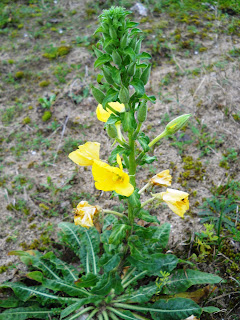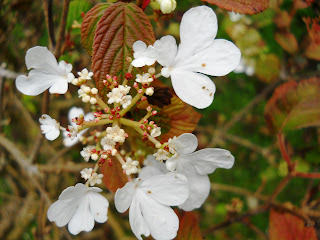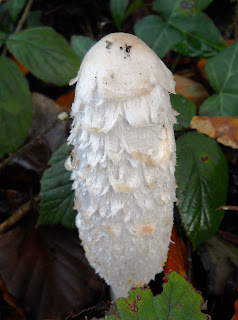A very windy day at Oxwich. Masses of gulls (a variety of species) gathered in the shallows possibly because a shoal of sprats were driven in (in some places this reflects feeding activities of seals) but other people noted that the accumulations of seabirds were much greater than those normally seen in previous years.
This blog may help people explore some of the 'hidden' issues involved in certain media treatments of environmental and scientific issues. Using personal digital images, it's also intended to emphasise seasonal (and other) changes in natural history of the Swansea (South Wales) area. The material should help participants in field-based modules and people generally interested in the natural world. The views are wholly those of the author.
Thursday, 29 December 2011
Wednesday, 28 December 2011
Saving a Rhino?
An excited report that Malaysian authorities hope to 'save' the Borneo Sumatran rhinoceros from extinction by using a newly captured female to breed with a zoo-based male seem wildly optimistic (http://www.guardian.co.uk/world/2011/dec/27/malaysia-borneo-sumatran-rhino-extinction). It is never easy to breed 'difficult' animals in captivity and any offspring would have a) limited genetic diversity and b) probable difficulties in adapting to a wild existence. Given that the number of such rhinoceros in the wild are estimated to be around 40 individuals, it is likely they will be extinct within a decade. Even the Southern white rhinoceros (illustrated), which is in a far better state population-wise, is far from safe.
Scotland's Legacy
I suppose it was bound to happen, in these cash poor times, but a reduction in the funding of Scottish National Heritage will have a major impact on the ecology of the region (http://www.guardian.co.uk/environment/2011/dec/27/spending-cuts-scotland-endangered-species). Many initiatives such as those concerning the encouragement of the Red squirrel European beaver and the Osprey and those directed at the eradication of the Signal crayfish, Rhododendron and Japanese knotweed will have to be curtailed. Such issues were formerly protected from cuts in Scotland but major percentages of the former spending (around 20%) are being 'redirected'.
Tuesday, 27 December 2011
Eggsalent Piece of Work
It appears that environmental legislation has inadvertently made it an offence for even bona-fide museums to have egg shells from wild UK birds that were collected between 1954 and 1981 (http://www.guardian.co.uk/law/2011/dec/26/lawyers-crack-case-unlawful-eggs). This seems to have been a drafting glitch that has been seized upon by collectors. Changes are needed as it is difficult to defend retrospective alternations to the law.
Wednesday, 21 December 2011
Death Strimmer?
I know it's a bit futile to complain, in these cash-strapped times, about any attempt to 'tidy up' the environment. It seems to me, however, that the people charged with clearing vegetation from the margins of cycle paths and public land in many cases do more harm than good (such that the location may take years to recover). Their basic approach generally seems to be to remove as much plant material as possible in the shortest possible time. The net result is that 'rough' areas, that were productive in terms of flower variety as well as insect and bird life, get converted into 'green desert'. It's a pity it can't be done in a more sensitive fashion. Perhaps one could develop a web site listing information about areas or zones that could/should receive more careful attention?
Thursday, 15 December 2011
Eating Their Inheritance
There is a disturbing report that lemurs are being eaten as bushmeat on the island of Madagascar to a much greater extent than in the immediate past (http://www.bbc.co.uk/news/science-environment-16138206). This is said to be largely the result of an influx of humans to the island who challenge the earlier tradition of the islanders that the lemurs are representative of human ancestors (and hence there was a taboo in terms of eating them). Decimation of the lemurs in their unique stronghold would greatly impoverish the biota. Strange how 'free meat' can have that effect.
Tuesday, 13 December 2011
Naughty Attenborough?
There seems to be an unholy fuss about the Polar bear cub sequence in 'Frozen Planet' being filmed in a Dutch zoo (http://www.guardian.co.uk/media/2011/dec/12/frozen-planet-polar-bear-bbc?newsfeed=true). I must admit to being less than surprised about this section of the programme. Many 'natural history' films involve quite a lot of artifice - how did that convenient prey insect just land there as the cameras roll? I have argued that one could, by selection of footage, make even an erroneous tale seem convincing. The BBC did detail the origins of the cub shots in a brief item on their web (more than you get in many instances) and I don't think the actual sequence misinforms about what usually happens. Perhaps Sir David's crime is to irritate sections of the media with his observations on climate change?
Durban in the Dumps?
I suppose that an agreement of sorts on climate change measures is better than no agreement at all (http://www.guardian.co.uk/environment/interactive/2011/dec/12/durban-climate-change-conference-2011-global-climate-talks) but the finally documented item does appear a bit on the feeble side. Clearly having widespread economic problems at the same time as recognising a need to reduce human impact on the atmosphere is not an ideal combination. I will be surprised if very much that is positive for limiting climate change actually happens. It has been suggested that solar panels in the desert could supply 'green electricity' but preventing the devices being etched or covered in sand by winds might be problematic.
Monday, 12 December 2011
Not So Much Head in the Sand
It has always been claimed that ostriches and emus etc (the so-called ratites), differ from other birds, in that their males achieve penile erection by engorging the organ with blood (as do mammals). A recent detailed study (http://www.bbc.co.uk/nature/16112188 ) has, however, confirmed that these birds, like the rest of the Aves, actually use lymph in this process. This suggests that the mechanism evolved early in this vertebrate Class.
Friday, 9 December 2011
Enskilling the Welsh Workforce
It is gratifying to be involved (on a part-time basis) with the Advanced Professional Training in Biosciences initiative at Swansea University (http://www.swan.ac.uk/aptbioscience/). This EU-funded programme aims to develop and deliver modules to help with Continuing Professional Development of bioscience workers in small and medium-sized enterprises in most of Wales. Four modules ('Pest control', 'Wild plant identification', 'Invasive plant species' and 'Laboratory skills') have been successfully delivered to enthusiatic acclaim from the participants. It is obvious, even from this initial list, that the modules are intended for both field and laboratory workers. It is also hoped that their provision will enhance employment prospects of recent graduates (they provide practical skills that can be lacking from degree programmes).
Wednesday, 7 December 2011
Seawater on the Up?
The last programme in Attenborough's 'Frozen Planet' series ('On Thin Ice') paints a pretty pessimistic picture of global change (http://www.bbc.co.uk/programmes/b00zj39j). It appears that the rate of ice loss at both poles is accelerating and this is likely to have a dramatic effect on sea levels. It is particularly striking that the decline in ice at the north pole has made it much easier to extract oil and gas which, when burned, is likely to further increase global warming. The 'freeing' of the north-west passage from ice would also increase marine traffic between the Atlantic and the Pacific (furthering the release of carbon dioxide into the atmosphere). I must admit that Attenborough's graphic presentation of evidence is likely to be compelling to the lay viewer (in spite of the fact that much of the global warming debate has, apparently, failed to convince). His notes that some polar animals have 'adapted' to the changes (mainly by altering their location) but this would not seem to be an option for many human populations.
Saturday, 3 December 2011
Hard Times-Green Times?
There is presently an urgent need to intensify efforts to limit anthropogenic effects on world resources and climate change (not helped by burgeoning population increases). This is, however, occurring at the very same time as world financial pressures make lives very difficult for many people in the so-called 'Western world' (not to mention elsewhere). Studies of animal behaviour suggest that this will be a toxic combination. Species do not show any tendency to take account of longer term issues (it is difficult to think of any evolutionary mechanism that could do this). They are essentially programmed to deal with the immediate needs for avoiding starving or being eaten as well as finding enough resources to breed. Most of the immediate political responses to the current financial problems suggest that 'our' response will be exactly the same. For example, it has been claimed that attempts to limit carbon release into the atmosphere have forced more UK people into 'fuel poverty' (where more than 10% of their income is spent on lighting, heating and cooking). It has also been suggested that we in the UK need a relaxing of the planning laws (including the protection of 'green belt' land) to generate affordable housing and to improve transport links. The prognosis doesn't look good.
Friday, 25 November 2011
Clasping a Viper to His Breast?
It's amazing how bigoted people can be about certain animals. Alexander Chancellor, for example, can see no utility in the 'adder' unless their conservation can be used as an argument against the development of wind farms (which he likes even less) in his native Northamptonshire (http://www.guardian.co.uk/commentisfree/belief/2011/nov/24/emulate-christ-tribunal-cheek-slapped?INTCMP=SRCH). He doesn't seem to appreciate, in his Chancellorocentric view of the natural world, that the snake only bites people and their animals when they pick it up or tread on it (it's a waste of its hard-generated venom as the snake can't swallow them). Vipera berus is an important part of the ecology of many areas, as it largely feeds on rodents with the potential to show population explosions. The snake's loss from areas is generally a sign that the environment has suffered from intensive agriculture or urbanisation. The adder is actually a beautifully adapted little beast with the largest geographical range (southern Italy to the high Arctic) of any reptile. It's a good job that Alexander doesn't live in India or Australia as the tiger or the shark would be respectively doomed.
Thursday, 24 November 2011
Wednesday, 23 November 2011
Seeing the Changes 434
Swansea University has, by using sections of tree trunk to limit carparking, created a wonderful substrate for the growth of fungi. Some populations are very impressive and extensive and one can certainly see masses of Sulphur tuft (Hypholoma fasciculare), Trooping Crumble cap (Coprinus disseminatus) and Coriolus versicolor brackets. More fungi were evident between Swansea and Mumbles. In that area, the flowers of Autumn are slow to go. Along with numerous Daisy, Dandelion, the odd Crucifer and Ragwort, Evening primrose (Oenothera spp), Bramble (Rubus fructicosus), Burnet rose (Rosa pampinellifolia), Sea rocket (Cakile maritima), Sea mayweed (Matricaria maritima) and Yarrow (Achillea millefolium) were still in flower. The first of the Winter heliotrope (Petasites fragrans) were, however, peeping though. Unremarkably, cultivated, foreign plants were also in bloom. At Blackpill, Oystercatchers (Haematopus ostralegus) massed on the beach.
Tuesday, 22 November 2011
Orchid of the Night
A orchid (Bulbophyllum nocturnum) from an island off Papua New Guinea has been described by a Dutch scientist that, unlike the other 25,000 species of such plants (one is illustrated), only flowers at night (http://www.guardian.co.uk/science/2011/nov/22/night-flowering-orchid-discovered?INTCMP=SRCH). This suggests that it must be pollinated exclusively by some nocturnal agent (a moth?). Unfortunately, the island is scheduled for logging activity.
Saturday, 19 November 2011
Fungal Inventory
News that the Royal Botanical Gardens at Kew are to attempt to produce a genetic classification of the UK's fungi is interesting (http://www.bbc.co.uk/news/science-environment-15726717). The claim is that, without a clear understanding of the species we currently have, we will never know what we have lost to climate change, pollution events and urbanisation etc. It is clearly felt that relying on spore patterns produced by fruiting bodies only gives a partial picture. The fungi are incredibly important in natural recycling of carbon etc. The wax-caps are first on the agenda but it sounds as if the tiny soil fungi are not due for study any time soon.
Friday, 18 November 2011
Thursday, 17 November 2011
An Asalt on Our Senses?
I have always argued that sodium chloride is sodium chloride and there is little point in paying for gourmet salts. A new study (http://www.guardian.co.uk/society/2011/nov/17/gourmet-salt-health-celebrity-chefs?INTCMP=SRCH) has confirmed that both are equally bad for you. You probably only rarely need to add salt to processed foods. The manufacturers have leaped in with arguments that the 'trace elements' in sea salt etc are of benefit but they are present in tiny amounts and are variable impurities.
Froggone!
Disturbing news that a recent report concludes that a 'perfect storm' of climate change, habitat loss and a fungal disease (chytridiomycosis) seems poised to flip most of the world's remaining Amphibia (frogs, toads, newts and salamanders) into extinction (http://www.guardian.co.uk/environment/2011/nov/16/amphibians-terrifying-extinction-threat). The first two of these factors seem, in many parts of the globe, to be additive whereas chytridiomycosis seems to strike more locally and sporadically. I personally think that the loss of these fascinating beasts would be awful as well as having 'knock on' effects on the ecology of regions. Urgent action is needed! Hop to it!
Sunday, 13 November 2011
Seeing the Changes 432
Quite a lot of speculation in the media about whether nature has been 'fooled' into producing a 'second spring' (http://www.guardian.co.uk/environment/2011/nov/13/warm-autumn-wildlife-oddities?INTCMP=SRCH). This is largely based on seeing seasonal oddities. I don't think that too much should be read into them as strange timings for insects and flowers are not that uncommon. Locally, Orange hawkweed (Pilosella aurantiaca) is late in flower and the bushes in my garden are flowering for the third or fourth time.
Saturday, 12 November 2011
Monday, 7 November 2011
Sunday, 6 November 2011
Westonbirt Wonders
Went to Westonbirt Arboretum (near Tetbury in Gloucestershire) to check out the Autumn leaf colours. There were lots of impressively garish trees and some nice views of individual Acer leaves. Some of the fungi were also impressive and, in spite of the recent cold weather, flies were still active on the Cow parsley in the glades.
Friday, 4 November 2011
Religion and Conservation Philosophy
Given the recent field course in Sikkim and our exposure to varied religions, it is interesting to note the debate about the increasing world population as seen from a Buddhist perspective (http://www.guardian.co.uk/commentisfree/belief/2011/oct/31/population-growth-buddhist-reincarnation). Buddhists apparently do not believe that reincarnation is a matter of 'one out -one in' where which a permanent 'soul' persists but prefer to talk in terms of rebirth.
Sunday, 30 October 2011
Thursday, 27 October 2011
'Frozen Planet' Fundamentals
In one sense it is gratifying (and important) that the first programme in the 85-year old David Attenborough's 'Frozen Planet' series attracted 6.8 million viewers (http://www.guardian.co.uk/media/2011/oct/27/david-attenborough-frozen-planet?newsfeed=true). This is still considerably less than 'Strictly Come Dancing's' 9.4 million but, hey, the dancing abilities of a group of 'celebrities' is clearly more important than what is happening on a planetary basis! There is no doubt that the photography in 'Frozen Planet' was generally stunning and the animal 'mini-dramas' appeared broadly accurate and compelling (if the outcomes appeared occasionally 'cosmetic') but I found the flicking for examples between the north and south poles somewhat confusing (and this is someone who knows something about the two regions already). Like some others, I am a bit ambivalent about the associated music. I am not certain that Attenborough's claim that we might be seeing some of the animals for the last time is true but it is worth thinking about.
Wednesday, 26 October 2011
Saltatory Sandhoppers!
Caught in torrential rain whilst jogging between Blackpill and West Cross, I noted sandhoppers bouncing across the cycle path from the seaward to the landward side. I can't think of a reason why they would do this unless they all happened to be operating on the seaward side and the path was perceived as getting away from the rainwater.
Cactus Rustling
News that two Germans have been arrested in Mexico with 543 cactus specimens in their suitcases (http://www.guardian.co.uk/world/2011/oct/25/germans-detained-cacti-mexico-airport?INTCMP=SRCH). These included several endangered species. This just goes to confirm my belief that gardeners are a major menace to conservation!
Sunday, 23 October 2011
Contrary Effects of a Malaria Vaccine?
It would be a churlish, callous individual who did not applaud the technical breakthrough of scientists developing a vaccine for malaria capable of halving death and morbidity in African children (http://www.bmj.com/content/343/bmj.d6832.extract). This is the first time that a vaccine has been developed to a protozoan parasite and this, along with the distribution of bed nets and effective mosquito control, could transform human population dynamics in the sub-Saharan region, especially if vaccine use is encouraged by the Bill and Melinda Gates Foundation. This 'technofix' will not, however, come without some associated problems. The malarial agent is very variable and it might well prove difficult for vaccine development to stay 'ahead of the game'. A second problem is that, without a rapid change in reproductive behaviour, the increased survival might well lead to later economic development problems in the region. Finally, there has been some recent predictions that the world population for humans will reach around 10 billion by 2050 (http://www.worldwatch.org/node/6038). If this occurs, it might well prove to be catastrophic for the planet and its inhabitants. Child death and morbidity is not a good way to curtail population increases (by no means limited to Africa) but I would argue that vaccine application should be accompanied by dissemination of contraceptive advice and technology.
Subscribe to:
Comments (Atom)
-
I n the UK and US, a pparently popular and successful vegan/vegetarian restaurants are reportedly closing or adding meat to their menus ( ...
-
Early ripening fruit may seem convenient but some folk think it confirms environmental stress. There's also a possibility th...



















































%20mating%20NWCW.jpg)

